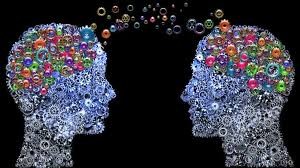As workplace mediators, empathy is at the heart o f our work. We were therefore very excited to be able to attend a conference this week at the British Academy in London which presented cutting-edge neuroscience research into how empathy can promote dialogue and understanding in conflict zones, with a particular focus on the Middle East.
f our work. We were therefore very excited to be able to attend a conference this week at the British Academy in London which presented cutting-edge neuroscience research into how empathy can promote dialogue and understanding in conflict zones, with a particular focus on the Middle East.
Empathy and the Brain
The 2-day conference brought together an international panel of speakers who shared fascinating insights into how our brains respond to other people’s emotional state. Dr. Emile Bruneau, a neuroscientist from MIT, explained how MRI scans show the brain responding to other people’s physical pain and emotional suffering. Indeed, the scans show that the brain makes a distinction between both types of distress.
Empathy and Children
Professor Dale Hay, a psychologist at Cardiff University, explored the role of empathy in children from 6 months to 7 years. The predictors of empathic behavior at age 7 were related to whether a baby tried to share food with a parent, or whether they spontaneously shared toys with other children. Interestingly, whether babies cried when they heard another child cry was not a predictor of empathy at this age.
Empathy and Mediation
Of particular note from a mediation point of view, is the research from Professor Simone Shamay-Tsoory of the University of Haifa. She has researched empathy bias in different groups with strongly held beliefs about another group (in psychology terms, these are termed ingroups and outgroups). In each experiment, the participants in the in-group were shown pictures of members of the out-group whilst their empathy levels were recorded. The experiment was repeated but with more personal information given about members of the out-group, and the results yielded lower levels of empathy bias. This ties into the role of story-sharing in mediation: by understanding the other side, we are able to humanise them, which removes some of our biases towards people we are in conflict with.
Shamay-Tsoory also shared research from a colleague who has looked at the role of the ‘consoler’ in alleviating stress. The research demonstrated that higher empathy in the ‘consoler’ predicted diminished pain in the other. Whilst we would not describe the mediator’s role as one of consoling, it is interesting to consider how empathy for someone in pain can impact their experience. She also explained that oxytocin, the so called ‘love-hormone’, has been shown to increase trust between individuals when administered nasally. We are not about to suggest this becomes common practice in workplace mediation! However, all of these thought-provoking experiments show that there is much to learn about the role of empathy in our human interactions and our ability to resolve conflicts with each other.


